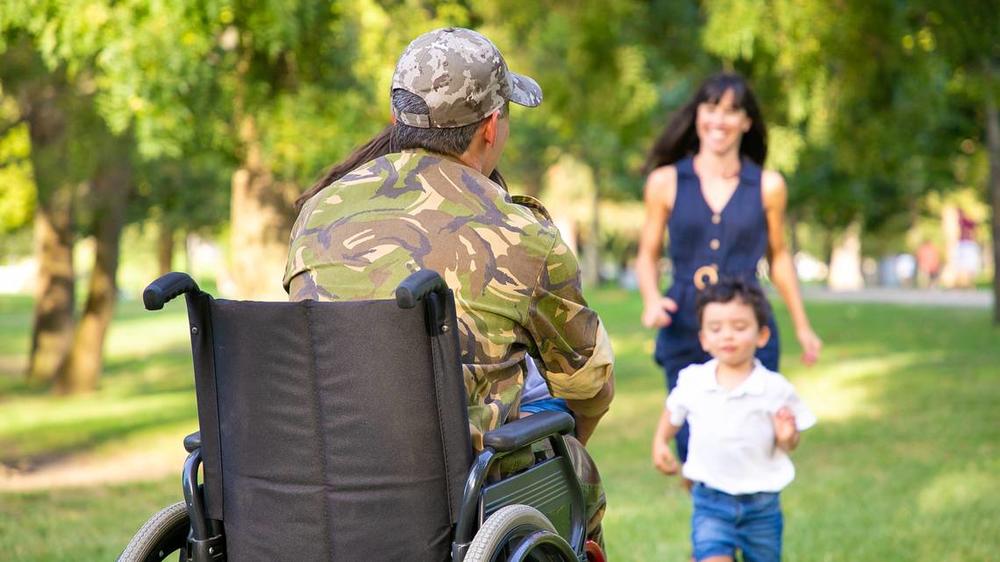
Caption
Family of a retired, disabled, military father running to hug him. A veteran of war or returning home concept.
Credit: PCH.VECTOR/Freepik

Family of a retired, disabled, military father running to hug him. A veteran of war or returning home concept.
Outside of designated holidays and the occasional “thank you for your service” received after a recognized sign of service, disabled veterans tend to be often overlooked as being considered a protected community. An even larger issue, which remains a concern among some discharged and retired veterans alike, is getting disability benefits for those who reach the qualifications.
Whether their reason for not having a 100% disability status is a lack of knowledge about how to reach this disability status or they simply have not been fairly treated by the Veterans Association, there are several ways for veterans to overcome obstacles and make steps toward getting the benefits they deserve.
Disability benefits do not simply come in the mail with no action. It requires that the veteran fill out and send in the official disability application and then wait months or potentially years to hear back from the VA with status updates.
To apply for the full range of disability benefits a veteran needs to either have one injury with a 100% disability rating or multiple injuries with ratings that add up to 100%. The list of injuries that cover this is as follows:
Injuries with a potential rating of 100%
Psychiatric conditions (PTSD, bipolar, schizophrenia, depression, anxiety)
Chronic health conditions (must start within the first year of discharge from service)
Total loss of hearing or sight
Traumatic Brain injury
Injuries with potential partial ratings (less than or adding up to 100%)
The VA’s methods of calculating ratings don’t follow normal math methods. For instance, when a veteran comes in with two separate injuries rated at 50%, they would only get approximately 75% disability. In some cases only a 90% disability rating would be needed for the VA to round to the nearest 10% and give the veteran full benefits.
Check for more details on the VA’s methods of calculating rating sums to get a full understanding of the rating system before applying for disability or ranking the severity of each injury.
While the process of getting 100% VA benefits can prove to be difficult and time-consuming, these tips could significantly decrease the amount of struggle and the time it takes for the process to finish.
Make sure to read through details on methods to speed up the process and do research on additional benefits a veteran would be entitled to after achieving 100% disability.
After filing the paperwork for the veteran’s disability claims, if for any reason the Veteran’s Association does not respond or denies the appropriate ratings for injuries, make sure to contact the help resource or organization that can help with the veteran’s specific situation.
Contact list:
This story comes to GPB through a reporting partnership with The Telegraph.